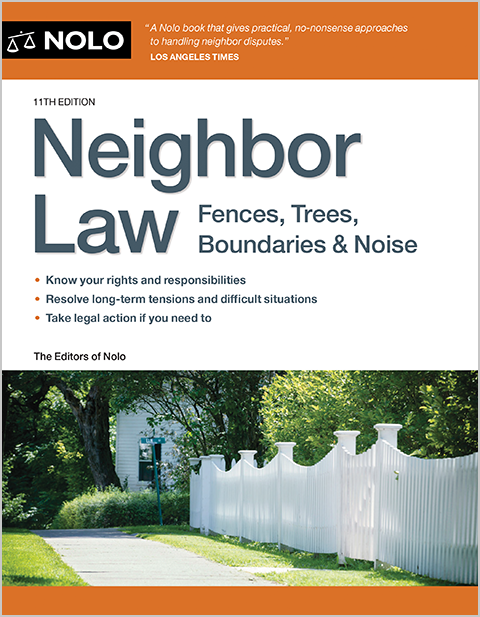Before purchasing a vacant piece of property, get a survey to find out, for example, whether you'll need to deal with easements or encroachments by neighboring owners.
Choosing a parcel of vacant land to buy involves more than just admiring the view and the bubbling stream and imagining which spot would be best for your new home. You'll also want to find out about any hidden, nasty surprises before you purchase; perhaps that a public path runs through the center of the property (an "easement") or that a neighbor's house sits partially on the land.
One way to be an informed buyer is to get the land surveyed. A survey will not only show exactly where the property lines lie, it might also reveal unknown easements, encroachments, and boundary issues that could cause problems later.
What Type of Land Survey You Need
A licensed land surveyor typically offers a number of different survey types. What kind of survey you need depends on what you will use it for. For example, you might need a subdivision survey if planning to divide a large property into several smaller parcels. Or, a topographical survey might be the best if erosion control seems to be an issue.
The most comprehensive survey, and the one commonly recommended for vacant land, is an ALTA/ACSM (ALTA) survey. (The name derives from "American Land Title Association/American Congress on Surveying and Mapping," which are the entities that set the survey requirements.)
What's in an ALTA Land Survey
At a minimum, an ALTA survey depicts the legal boundaries of the property and any improvements, easements, rights-of-way, and encroachments found there.
You can also include a number of "optional" items on an ALTA survey (usually for an additional charge). These options appear on "Table A" of the survey form. They include such things as a list of the names of adjoining landowners and notice of whether the property is in a flood zone.
Before ordering a survey, discuss the advisability of including any of the Table A items with the surveyor, the title company, or an experienced real estate attorney in your area.
A Survey Helps Show Exactly What Property You'll Own
One of the first things a surveyor commonly does is to check the legal description of the property for accuracy. This ensures that you are getting all portions of the property you expect, in the amount of acres that you expect, and that you know exactly where the property lines are drawn.
Getting clear on such matters could be important for when you actually own the place. For example, regulations governing some uses of land (such as installing a septic system, drilling a well for water, or qualifying as "farmland") might require a minimum number of acres.
And, of course, you want to avoid later disputes with adjoining owners, over issues like "Whose tree or water supply is that," or "Can I build a road here?"
A Survey Might Show Exactly Where Others Can Use or Pass Through Your Property
An ALTA survey also shows the exact location of any easements or encroachments on the property. An easement is created when a landowner grants another party permission to use a certain portion of the owner's property for a specified purpose. For example, an owner might grant a neighbor permission to take a shortcut through a corner of the land.
An encroachment is when an improvement belonging to one property owner partially lies on an adjacent property, without the adjacent owner's permission, such as if a neighbor builds a perimeter fence that turns out to be partially on the wrong property.
By looking at a survey that shows the property lines as well as all improvements on the land, you can see whether any neighbor has constructed anything that encroaches on the land you're hoping to buy. (Since encroachments don't involve recorded agreements, you typically won't find out about any encroachments just by looking at a title commitment.)
Although you might find out about the existence of recorded easements by reviewing title insurance commitment, knowing their exact location (by looking at a survey) is crucial for understanding whether they'll affect your enjoyment of the property. For example, you might not mind if you see that the neighbor's pathway easement runs down the edge of the parcel. On the other hand, you might have a huge issue if the survey shows that the easement runs smack-dab through the middle of the property.
When to Arrange for a Land Survey
You will likely need to obtain a title commitment for the land before the surveyor can create a survey. Normally you receive a title commitment from the seller shortly after you sign a purchase agreement. The title commitment is the document in which a title insurance company promises to insure title to the property once purchased. The commitment contains a list of all the recorded documents that affect the property. The surveyor obtains copies of the documents listed on the commitment to assist in creating the survey.
For example, the title commitment might list the title and recording information for an easement agreement affecting the property. The surveyor will look at a copy of the recorded document to find the description of the easement's location, and then map the physical location on the survey.
What If I Don't Want a Land Survey?
If you are using a title company or a lender in the purchase transaction, you might not have a choice about getting a survey. Commonly, lenders require an ALTA survey before issuing a mortgage for vacant land. Additionally, title companies sometimes require an ALTA survey before committing to issuing title insurance for vacant land.
If an ALTA survey is not required by your title company or lender, however, you can choose not to get one. But you'd be taking a risk. If the title company does not receive an ALTA survey, it will probably not provide insurance coverage for various problems that could have been revealed on such a survey. (It might express this exclusion as items that "do not appear in the public records" or something similar.)
Title companies ordinarily rely on surveyors to find physical evidence of potentially problematic things such as unrecorded easements (for example, because the surveyor sees a worn path that the public frequently uses) or undocumented encroachments (for example, where the surveyor notes that a neighbor's fence or driveway partially intrudes on the property).
What to Look for When You Receive the Survey
Review the survey to see where the property lines are located, and the location of any easements. You might spot an encroachment or an easement that you weren't aware of.
Reviewing a survey is not always easy, however. The surveyor's notations can be cryptic, and the survey might look like a lot of confusing gibberish. Spotting potential problems sometimes takes a practiced eye. You also might need help in determining whether a particular easement or encroachment is a concern and if so, what you can do about it. An experienced real estate attorney in the area can assist and advise you about what the survey reveals.
Presuming you have a well-drafted survey approval contingency in your land purchase contract (talk with a real estate attorney before signing to make sure you do), then obtaining a survey gives you the chance to resolve any potential problems with the property revealed on the survey before you buy. If the problems can't be resolved, or if the survey reveals an issue that you just can't live with, you can get out before it's too late (and get your earnest money deposit back). It's better to be a disappointed buyer now than a disgruntled owner later.
Talk to a Lawyer
Need a lawyer? Start here.
How it Works
- Briefly tell us about your case
- Provide your contact information
- Choose attorneys to contact you
- Briefly tell us about your case
- Provide your contact information
- Choose attorneys to contact you


